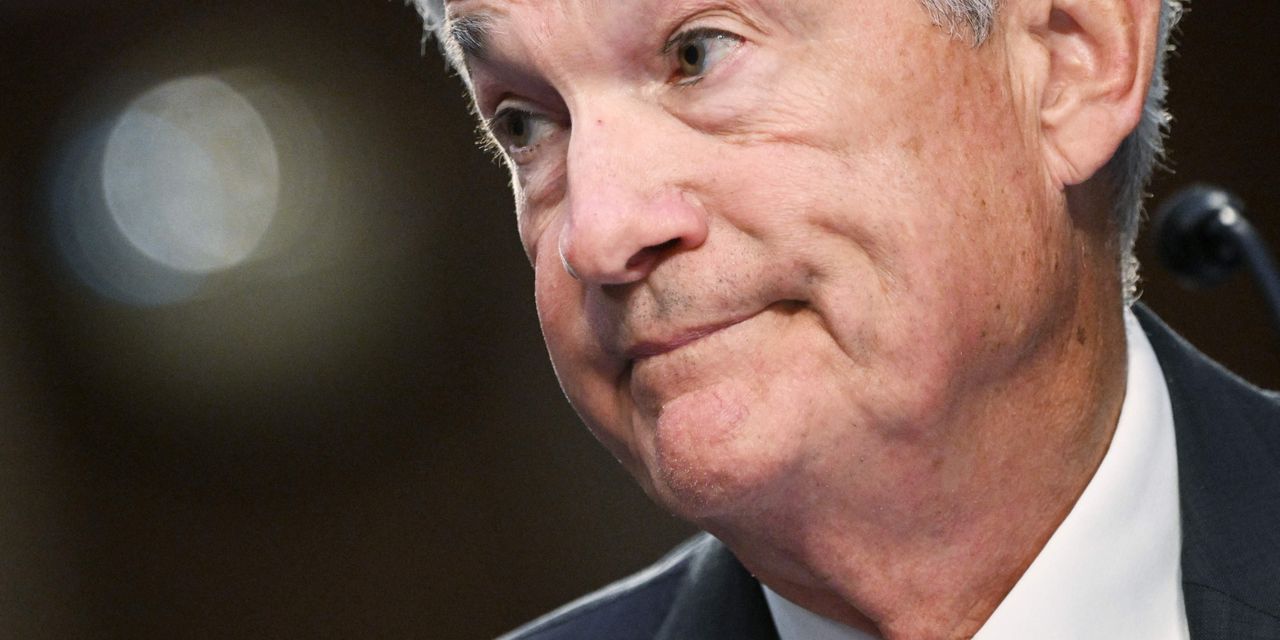
Market Extra: ‘The world has changed’ as investors absorb highest Treasury yields in more than a dozen years
Mandel Ngan/Agence France-Presse/Getty ImagesOvernight, it seems, the world suddenly looks like a different place as Treasury yields test their highest levels in more than a dozen years on Thursday. Treasury yields are the benchmark for borrowing costs across the U.S. economy and, as the result of the Federal Reserve’s higher-for-longer message on rates on Wednesday, investors and traders are coming to grips with the likelihood that the era of low rates is gone. Read:Fed skips rate hike for now, but doesn’t rule out another increase this yearThe impact of rising yields and the Fed’s messaging reverberated across global markets — sending Asian and European bourses to lower finishes in Thursday’s trading session, followed by declines in U.S. stock indexes. The greenback briefly surged to a more-than-six-month high, based on the ICE U.S. Dollar Index DXY. And the combination of rising yields and a higher dollar produced what XM senior investment analyst Marios Hadjikyriacos describes as a “toxic combination” for gold. Broadly speaking, it’s not just higher-for-longer interest rates anymore that worry investors, but the possibility that U.S. borrowing costs may have more permanently risen. In Wednesday’s policy update by the Fed, officials penciled in another rate hike by year-end from current fed funds levels of 5.25%-5.5% and pulled back on the number of rate cuts they foresee for 2024, while lifting their projections for where the fed funds rate target is likely to land at the end of 2025. Read: Higher Interest Rates Not Just for Longer, but Maybe Forever“The world has changed notably since the last Fed meeting,” said Christian Hoffmann, a portfolio manager at Santa Fe, New Mexico-based Thornburg Investment Management, which oversees around $42 billion in client assets. Yields at or heading for their highest levels in over a decade “are forcing investors to reconsider not just duration positions, but also the risk premium of global assets at large. Broadly, that’s creating more losers than winners, especially today where we see falling equity prices and bond prices.”Hoffman uses the word ‘duration’ to refer to bond positions. Risk premium is a gauge of relative value for stocks that helps investors determine what their short-term gain might be when taking on the additional risk of buying equities.Wednesday’s “hawkish” pause in raising rates by the Fed, followed by a similarly “hawkish” press conference by Chairman Jerome Powell, “caught fast money, or hedge funds, offsides and is forcing people in some cases to sell off bonds,” Hoffmann said via phone. “We broadly view it as an opportunity: You’re getting compelling real levels and levels in core rates that we haven’t seen in over a decade. It’s a good time to be in on the other side of that trade and conservatively add duration. All it would take is a speed bump for people to see a flight-to-quality and put duration back on.” On Thursday, 10- BX:TMUBMUSD10Y and 30-year Treasury yields BX:TMUBMUSD30Y jumped by more than 10 basis points each to 4.47% and 4.55%, respectively, putting them on track for their highest levels since Oct. 31, 2007, and April 12, 2011, as of midday in New York trading. Meanwhile, the policy-sensitive 2-year rate BX:TMUBMUSD02Y touched 5.2% and remained not far from one of its highest levels since July 18, 2006.Major Asian stock indexes all finished lower on Thursday, led by a 1.8% drop in South Korea’s KOSPI Composite Index. European stocks also closed lower, while U.S. equities slid for a third day in New York trading, sending major indexes DJIA SPX COMP to their lowest levels in a month. The ICE U.S. Dollar Index briefly surged 0.5% earlier in the day to 105.7, its highest level in more than six months — taking the wind out of gold prices.“The Fed really laid down the gauntlet yesterday with its higher-for-longer mantra,” said Michael Reynolds, vice president of investment strategy at Glenmede, which oversees $43 billion in assets from Philadelphia. “The higher-for-longer regime is something equity markets have to price in because of a higher cost of capital going forward. And that’s something market participants have been hesitant to do.”Outside of financial markets, “individuals have been a little less rate sensitive than in the past, but if rates stay high, we could see a bit more gridlock in the housing market absent some boom in construction,” Reynolds said via phone on Thursday. “Rate sensitivity doesn’t flow through the economy immediately. These types of things happen slowly. It takes a while for higher rates to embed themselves into the psyche of consumers and businesses, but we think that a reckoning is coming.”
Market Pulse Stories are Rapid-fire, short news bursts on stocks and markets as they move. Visit MarketWatch.com for more information on this news.

